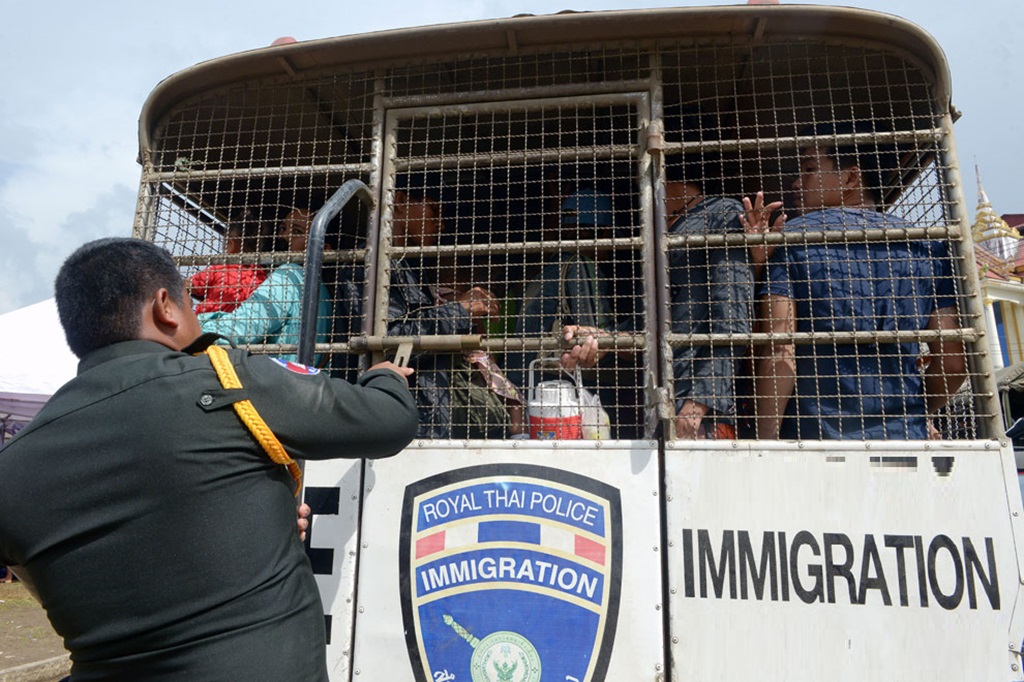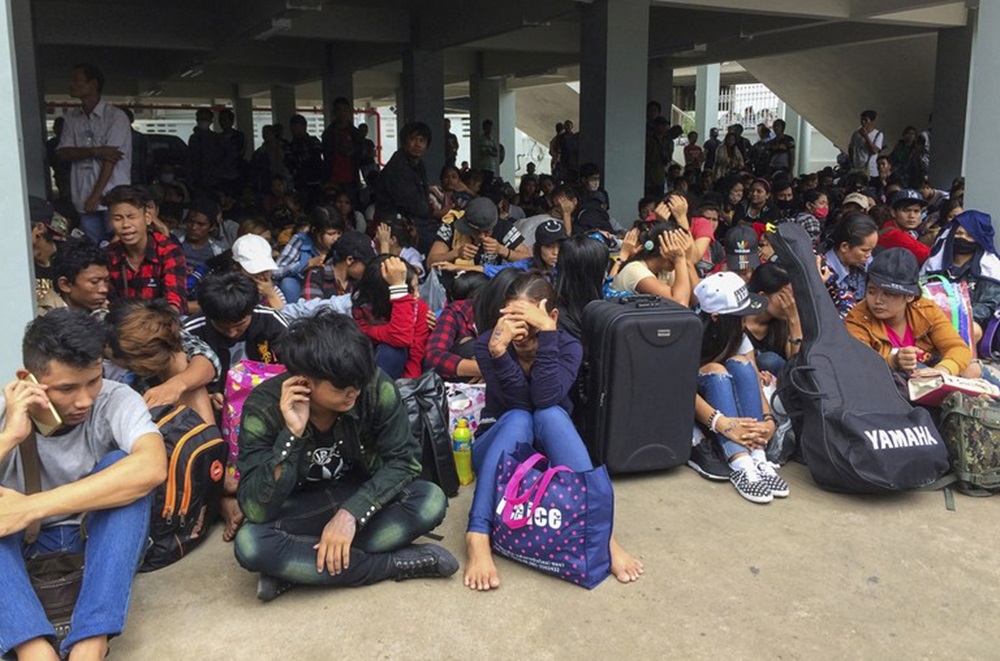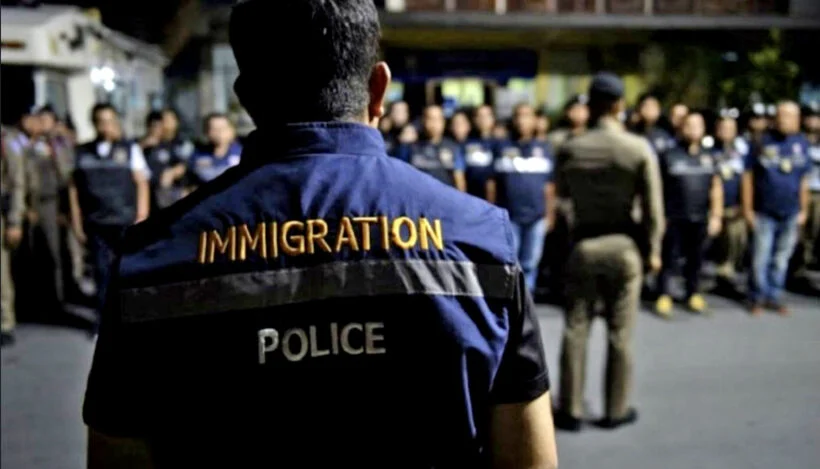Regional News
Forecasts of Asian Food Demand Doubling by 2050 Make Agriculture the New Oil
BANGKOK – Demand for food is set to surge within the region. Can productivity growth keep pace? Is it a Malthusianism catastrophe, or the stuff of farmers’ dreams?
With forecasts of Asian food demand doubling by 2050, will the Asia-Pacific’s expanding middle class make agriculture the new oil?
Among those answering in the affirmative are commodities traders like Jim Rogers, who has warned of food riots and told investors to buy storable produce.
“We’re going to have serious food shortages, not just in America but in the world. When I speak to universities and students, I tell them all they should be studying agriculture,” he told the financial website Money Morning.
Thai Students Learn about Rice Farming but Prefer the easy life of computers and cel phones“Soon, stockbrokers will be driving taxis, while the farmers are driving Lamborghinis,” added Rogers, who currently invests primarily in commodities and currencies.
In 2008, a spike in food prices worldwide precipitated a crisis that led to food riots in countries ranging from Bangladesh to the Philippines, where the cost of staples such as wheat, rice and maize doubled or tripled. Continued high prices have left an estimated one billion people worldwide without access to sufficient food, and another billion suffering nutritional deficiencies.
There is reason to believe that these trends will only worsen in the decades ahead.
Some forecasts have the world’s population growing to 9.2 billion by 2050. These 9.2 billion people, moreover, are expected to consume the equivalent of 12 billion people’s worth of food, based on current consumption levels, and the large increase in food production that will be needed will have to take place amid the reduced availability of water resources.
Reflecting economic and population growth, energy major Shell recently predicted that global demand for food, energy and water would rise by as much as 50 percent by 2030, and as high as 80 percent by mid-century.
Economic growth in Asia has already increased demand for higher protein and more diverse diets, including more dairy, fish and meat. According to the UN’s Food and Agriculture Organization (FAO), Asia’s meat consumption grew annually by a factor of 14 between 1961 and 2009, and higher levels of urbanization are only expected to exacerbate this trend further.
By 2025, nearly 2.5 billion people in Asia – over half of the world’s urban population – are expected to be living in cities, with the number rising to 3.3 billion by 2050. The increase in resources this greater urbanization will require should not be understated. After all, consumption per person in urban areas is up to two times higher than it is in rural areas of China and India.
In its “Australia in the Asian Century” White Paper, the Australian government forecast that the real value of global food demand would rise by around 35 percent by 2025 over 2007 levels, with most of the increased demand coming from Asia.
It also predicted that food production in Asia would need to be 70 percent higher in 2050 than the current level due to growing demand for more protein-rich food. While the gap is expected to be made up by higher yields and increased cropping intensity, the rise is not expected to be easy.
“While the increase needed in agricultural yields is comparable to those achieved in the past, crop productivity growth is slowing and producers face much greater environmental constraints and challenges than before. And in many areas, climate change is multiplying these challenges. By 2030, rising sea levels could expose large parts of the Mekong Delta to extreme salinization and crop damage,” the report said.
“The combination of resource and environmental constraints, along with higher input costs, will constrain the supply response in most regions, so coming decades will be characterized by high food prices. Stronger links between agricultural and energy markets, as well as more frequent extreme weather shocks, will also add to food price volatility,” it added.
ABARES bearish on food
Not everyone believes food security will be so precarious in the future, however.
Australia’s leading agricultural forecaster, the Australian Bureau of Agricultural and Resource Economics and Sciences (ABARES), believes that global food prices will barely change by 2050. It argues that all the major increases have already occurred.
“World food prices are, on average, projected to be around 11.5 percent higher by 2050 in real terms compared with prices in 2007. To put this projection into perspective…world food prices in real terms rose by 10.8 percent between 2007 and 2012. This increase was due largely to adverse seasonal conditions in some major producing countries pushing up world prices,” ABARE’s chief commodity analyst Jammie Penm said at a recent conference.
“So using recent movements in food prices as a guide, what we are projecting in these reference scenario[s] is that world food prices in real terms by 2050 will be just slightly higher than their average in 2012.”
The bureau’s view has been supported by U.S. Department of Agriculture’s chief economist, Joe Glauber,the press that prices would only increase marginally in real terms over the next 10 years due to productivity growth.
However, the FAO has forecast that prices will remain “higher than their historical trend values.”
“Now the question is, when as in 2007, 2008, again in 2010 – and more recently, last summer – we have the highest prices that we’ve seen in real terms for 30 years, what is the likely supply response?” FAO director David Hallam asked at the same conference.
In particular, Hallam emphasized the uncertainties over productivity constraints in developing countries, the growth of biofuels and the impact of climate change as potential stumbling blocks to increased global food stocks.
With the commodity super-cycle reportedly reaching its end, is the food super-cycle about to begin?

Regional News
Thai Immigration Police Detain Over 26,000 Illegal Migrant Workers

Thailand’s Immigration Police have detained approximately 26,000 illegal migrant workers from Laos, Myanmar, and Cambodia during an eight-day operation in Bangkok and surrounding regions, according to a Royal Thai Police spokesperson.
Mr Adisorn Keudmeuangkhon of the Bangkok-based Migrant Working Group said the drive was in response to an increasing number of concerns about an influx of illegal migrant labor.
“Some Thai people see that many illegal workers are competing for their job positions in the past few months,” he told me. “That’s why the ministry has to take tougher action.”
Civil strife in Myanmar and the recent implementation of a military conscription have driven thousands of Burmese into Thailand, while severe inflation and limited job opportunities in Laos have also encouraged an influx of workers from that country.
Between June 5 and 12, officials detained and checked 20,111 Myanmar laborers, 1,659 Laotian migrant workers, and 3,971 Cambodian workers, according to the Ministry of Labor.
It marked the start of a 120-day campaign to audit workplaces and arrest unlawful migrant workers, according to the government.

Migrant Workers to be Deported
According to Keudmeuangkhon, undocumented workers face fines ranging from 5,000 to 50,000 Thai baht (US $136 to $1,365), deportation, and a two-year prohibition on re-entering Thailand.
Authorities did not intend to file criminal charges, he claimed.
Authorities raided 1,774 workplaces, according to Moe Gyo, chairman of the Joint Action Committee on Burmese Affairs, which advocates for Myanmar labor rights.
He stated that since the military junta activated conscription, there has been an upsurge in the number of arrests of Myanmar citizens in Thailand who do not have a work permit identity card.
All men aged 18 to 35 and women aged 18 to 27 must serve in the military for at least two years. The first group of 5,000 conscripts summoned by Myanmar’s junta will start duty at the end of this month, military sources told AFP on Monday.
According to Keudmeuangkhon, the bulk of Lao migrant workers in Thailand work as fresh market shopkeepers, restaurant servers, and mall salespeople.
Most people visit Thailand as part of ASEAN’s visa-free policy for tourists, but they stay longer than the 30-day restriction once they find job.
“Employers like to hire Lao migrant workers in the service sector because they can speak fluent Thai,” he told me.

Immigration Police Detain Illegal Migrant Workers
The Thai Cabinet may approve an enhanced program for Thai employers to register their unauthorized foreign workers in July or August. Keudmeuangkhon explained.
Last month, the Thai Ministry of Labor’s Foreign Workers Administration office announced that 268,465 Lao migrant workers were officially working in Thailand.
Baykham Kattiya, Lao Minister of Labor, told Radio Free Asia earlier this month that there are 415,956 migrant workers in other nations, the majority of whom work in Thailand.
According to her, the Lao government believes that over 203,000 persons working outside of the nation lack proper work documents.
However, a Lao official familiar with the labor industry informed Radio Free Asia, a BenarNews-affiliated news station, on June 20 that the number of illegal Lao migrant workers in Thailand and abroad is likely significantly greater.
“They go to other countries as illegal migrant workers through different types of methods – as tourists or students,” said the politician. “Thus, it is hard for the immigration police to collect data on these people.”
Government Officials Responsible for Smuggling in Migrant Workers
Government Officials Responsible for Smuggling in Migrant Workers
News
High School Student Dies After Being Electrocuted By School Water Dispenser

Thailand’s Office of Basic Education Commission has initiated an investigation into the electrocution of a 14-year-old student by a water dispenser in a high school. The event happened at noon on Friday, during the high school’s sports day. The victim was a Grade 8 student.
According to local media in Trang Province, the incident occurred when a teacher instructed the pupil to turn off a water dispenser amid a heavy rain.
According to a witness, the child collapsed while strolling with his friend near a water station. The friend claimed he attempted to assist but was also shocked by electricity.
According to reports, the friend then recovered, left the site, and requested assistance from teachers. A teacher ran to the scene and used a towel to pull the boy away by the ankle. He was taken to the hospital, but it was too late, they claimed.
The event sparked criticism from parents and netizens over school safety, as well as the slow response to aid the young youngster.
Mr. Chainarong Changrua, head of Trang-Krabi’s Secondary Educational Service Area Office, told local media on Sunday that forensic officers from Trang Provincial Police had visited the area. They discovered the blown breaker switch behind the water dispenser, he explained.
The breaker was burned out, thus the authorities assumed the disaster was caused by a short circuit that allowed energy to spill to a neighboring power pole. The student also appeared wet and was not wearing shoes when electrocuted.
According to the Office of Basic Education Commission, a probe team will complete its investigation this week.
The student’s father, Mr Pornchai Thepsuwan, 53, claimed he was saddened when he saw his son’s body. The boy (Wayu), was the youngest of two boys, he explained. He stated that following the tragedy, the school director and staff gave financial assistance to the families.
Mr Pornchai also said he would not seek charges against the institution because he believed it was an accident.
Electrical accidents in Thailand
Electrocution instances in Thailand have increased alarmingly in recent years. Many mishaps occur as a result of improper wiring and inadequate maintenance of electrical systems.
Public locations, such as schools and markets, frequently lack adequate safety precautions, putting individuals in danger. In rural areas, antiquated infrastructure exacerbates the situation, resulting in more frequent and serious events.
Although several high-profile cases have brought these challenges to light, genuine progress has been gradual. Furthermore, the rainy season heightens the likelihood of electrical accidents, as water and exposed wires do not mix well.
The government has made steps to strengthen safety standards, but enforcement is patchy. More education on electrical safety could help to reduce these accidents.
Unfortunately, better infrastructure and tougher rules may have prevented many of these incidents. The loss and injuries caused by electrocution are avoidable, emphasizing the need for immediate action.
Over 200 High School Students Facing Sedition Charges in Thailand
Over 200 High School Students Facing Sedition Charges in Thailand
News
Thailand’s Tourist Police Crackdown on Tourist Scammers in Pattaya

Thailand’s Tourist Police said it is collaborating with embassies from five countries to combat tourist scams and ten criminal gangs in Pattaya. The Tourist Police Bureau, convened a meeting on Thursday Pol Lt Gen Saksira Phuek-am told a press briefing.
Pol Lt Gen Saksira Phuek-am, the Tourist Police bureau commissioner said the participants included ambassadors from South Korea, Ukraine, Russia, India, and Switzerland.
He told the briefing the he had ordered a crackdown on tourist frauds, such as fraudulent or low-quality tour operators and unfair sales of goods and services. Stepped-up operations began on June 19 and will continue until June 25.
He stated that the agency was working with numerous organisations to increase tourists’ confidence in visiting Pattaya.
Gen Saksira spent time on the famed Walking Street speaking with officers on duty and assigned them to seek for members of ten criminal groups known to operate in Pattaya.
Meanwhile, Prime Minister Srettha Thavisin will visit Chon Buri on Saturday to assess the tourism situation. He intends to visit the site of a future Formula One racecourse near Khao Phra Tamnak in Bang Lamung District.
Prime Minister Srettha recently met with Formula One organisers in Italy to examine the potential of including Thailand on the race schedule in the future.
On Sunday, the Prime Minister will pay a visit to Rayong’s U-tapao airport to discuss development on the airport’s land, with the goal of encouraging investment in the Eastern Economic Corridor.
Police Chief Reinstated
In other police news, Pol Gen Torsak Sukvimol has been reinstated as national police chief following the conclusion of an investigation into a highly publicised quarrel, according to Wissanu Krea-ngam, Prime Minister Srettha Thavisin’s counsellor.
Mr Wissanu released the investigation’s findings on Thursday, after the prime minister formed a fact-finding committee chaired by Chatchai Promlert to investigate into the quarrel between Pol Gen Torsak and his deputy, Pol Gen Surachate Hakparn.
The four-month study revealed conflicts and disorder at all levels of the Royal Thai Police, but it was unclear whether these issues arose from a single cause or several causes, according to Mr Wissanu.
The findings revealed that both Pol Gen Torsak and Pol Gen Surachate were involved, with each team contributing to the tensions, he noted.
Mr Wissanu indicated that Pol Gen Surachate was reinstated as deputy national police head on 18 April following his relocation to the Prime Minister’s Office on 20 March. A disciplinary committee was formed to investigate Pol Gen Surachate, and he was ordered temporarily suspended from the police force.
Because there were no further difficulties to explore, it was decided to restore Pol Gen Torsak. He plans to retire on September 30.
On March 20, Mr Srettha abruptly transferred both top police officers to the Prime Minister’s Office in an effort to address the growing schism within the police service.
Kitrat Panphet, Deputy National Police Chief, was subsequently named Acting Police Chief. According to sources, Pol Gen Surachate could face money laundering charges related to online gaming networks.
Source: Bangkok Post
-

 News3 years ago
News3 years agoLet’s Know About Ultra High Net Worth Individual
-
Entertainment2 years ago
Mabelle Prior: The Voice of Hope, Resilience, and Diversity Inspiring Generations
-

 Health3 years ago
Health3 years agoHow Much Ivermectin Should You Take?
-

 Tech2 years ago
Tech2 years agoTop Forex Brokers of 2023: Reviews and Analysis for Successful Trading
-

 Lifestyles3 years ago
Lifestyles3 years agoAries Soulmate Signs
-

 Movies2 years ago
Movies2 years agoWhat Should I Do If Disney Plus Keeps Logging Me Out of TV?
-

 Health3 years ago
Health3 years agoCan I Buy Ivermectin Without A Prescription in the USA?
-

 Learning2 years ago
Learning2 years agoVirtual Numbers: What Are They For?